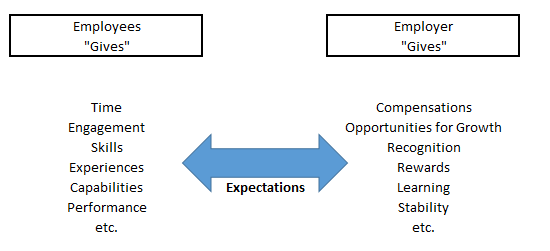“There’s a shortage of talent.”
That viewpoint is constantly popping up in the news. From the Internet to print media, the message is everywhere these days, because many companies are struggling with how to attract the right people.
However the problem is not shortage of talent, but how to attract talent to your doorstep.
Not every company draws applicants like Google, Tesla, Facebook, or SpaceX. Some are trying to fix this problem by adding more benefits, or more ping-pong or foosball tables to the office, because they believe that will show how cool they are.
Nevertheless, none of these things work in the long term, and companies that think they do are not attracting the top talent that they want and need.
A simple solution to the talent problem
Most high performers already have a lucrative job, can interview with top companies, or have some other interesting options on the table.
So how can an organization without huge resources at its disposal add top talent to its workforce? This is a question many company owners and talent acquisition leaders are trying to answer every day.
The “simple solution” has a name: the Employee Value Proposition.
An Employee Value Proposition (EVP) can be defined as the benefits that employees accrue as a reward for the skills, capabilities, and experience they bring to an organization. It is a reward system commensurate with the employee’s performance.
The creation of an EVP is necessary for any company that is trying to attract top industry performers. An EVP focuses on the major reasons people want to work for an organization — the workplace culture, study leave, motivational vision, and a sense of inclusion and community.
When correctly implemented, a good EVP will help an organization attract top talent. An EVP is not only for luring top talent from outside an organization but is also useful for retaining those within the organization and preventing a high employee turnover rate.
 Employee satisfaction involves more than an attractive salary and paid leave. Numerous reports prove that the reason people stay at their jobs often transcends money, and a properly formulated EVP will go a long way in helping management prioritize useful HR policies, create a strong and respectable brand, and build a happy and content workforce.
Employee satisfaction involves more than an attractive salary and paid leave. Numerous reports prove that the reason people stay at their jobs often transcends money, and a properly formulated EVP will go a long way in helping management prioritize useful HR policies, create a strong and respectable brand, and build a happy and content workforce.
A valuable tool to win the War for Talent
EVPs have become a valuable tool and strategy that helps recruiters and employers win the War for Talent.
It’s important to note that employee satisfaction has evolved over the last decade. Even the average candidate today, as well as the the top talent, wants a job that is fulfilling and meaningful. Yes, today’s employees are looking beyond a job with just a good paycheck and great benefits.
Here are some of the big things employees want in a job today:
- A sense of community and inclusion;
- A caring and fulfilling culture;
- Workplace vision, recognition and motivation;
- Study leave and a chance for employee growth.
These are just some of the key things employees want in a job, and this is where an EVP come in.
It outlines the things that will help attract more talented people to your company. When implemented in the right way, an EVP has the ability to not only lure in industry stars but also become one of the tools that have a positive impact on employee retention.
As many surveys and reports have shown, candidates (especially Millennials) want fulfilling jobs that are about more than just the just the money. When an EVP is formulated properly, management can focus more on creating a strong employer brand, building a content, happy workforce, and implementing valuable HR policies that favor both the employer AND the employee.
Creating a unique and compelling EVPs
If you want to create a compelling and unique EVP, there are few things you need to focus on:
 1. Get — and analyze — your data
1. Get — and analyze — your data
Every strategy or plan should start with an analysis of the data you collected. First, you must look inward and try to understand what your current employees think about your organization.
Inquire internally about your employees’ thoughts and feelings about your organization. Why are employees staying with your organization? Why do they leave? Why do they quit after a month or two? Questions like these should be your main focus when collecting data.
This type of information is very easy to collect from employee surveys, focus groups, exit interviews, feedback from previous employees, retention metrics, onboarding surveys, and so on. You can also analyze this data for patterns and themes.
2. Find a central theme and involve your key people
The second stage is rooted in the engagement of your stakeholders. Talking to current employees and even potential employees is an important aspect of creating a credible EVP.
Involve the key people from your company. Groups should consist of members of the HR team, management, marketing, existing staff, and even potential employees.
Combine the marketing and HR teams. While the people from marketing bring insight about external perception of the company, HR engages the internal stakeholders. The main objective of this process is to point out the central themes of your EVP through discussion and feedback.
Remember, your present employees play a critical role in the decision-making process. Because an EVP strategy focuses on your employees as opposed to a marketing strategy that defines the brand and sells it to the public, care should be taken to really involve existing employees in the decision-making process.
The bottom line is this: You’re trying to create an environment where you honor and care for your workforce.
3. Develop an EVP specific to your brand
To generate a unique EVP that speaks to your brand, feedback from internal sources and prospective employees must be collected. After this, you need to outline the central themes of your proposition.
Here’s what you need: A compelling statement that embodies the essence of your employee experience and employer brand commitment. Whether it is super employee growth, a great work-life balance, employee recognition, or community service, focus on your strengths and think about how to build on them.
It’s essential that your EVP statement is founded on a strong employer brand and employee experience.
Finally, ensure that your Employee Value Proposition supports your HR strategy and practices. Without collaboration with the human resources team, your EVP will not deliver on its promises.
4. Implement and spread your EVP message
Your EVP message should flow throughout an employee’s work timeline, starting during the recruitment process and building in the onboarding stage. From career growth to an employee’s exit from the organization, the EVP must be implemented across all sectors.
Be clear about this: The way you communicate your EVP matters. If you fail to communicate it properly, it will never reach its full potential.
To spread your EVP message, it must go through the right channels. In dealing with people, communication should be properly dispersed to reach its desired effect. You want people to hear how great your organization is.
In everything, focus on improving and cementing your corporate brand. This brand gives weight to your EVP message. Also, take note of how well (or how poorly) your EVP is doing. What is its value, financial implications, and return on investment?
If you want to be sure your EVP generates maximum returns, build it around attributes that genuinely engage, attract, and retain the talent you seek. You should promote your corporate brand from the inside out, and don’t focus on outside HR marketing or employer branding activities just because they’re trendy and everybody is doing it.
Remember, great things always begin from the inside.
How can recruiters leverage a unique EVP?
Because a properly designed EVP outlines employee rewards, benefits, and policies that attract top talent, recruiters who utilize an EVP strategy have the upper hand in the War for Talent. Since potential candidates are more likely to trust what current and past employees say and feel about an organization, recruiters can harness the power of a well-formed EVP to build on that and continue to aim for the very best.
Remember, an Employee Value Proposition is not just about making promises to your potential employees, because in the end, your organization must fulfill those promises.
A smart EVP strategy always starts from within. It is always smart to build from within and turn your people into evangelists who preach how rewarding and fulfilling your organization is.
Final thoughts
Having a strong Employee Value Proposition on paper is great, but you also need to implement it AND live it. Don’t forget to promise and deliver. If you state in your EVP that you offer the best learning possibilities in the market, you need to deliver on that.
It is also important to review the EVP annually; it’s a great way to ensure that the EVP still reflects the employee’s changing experience. People and companies are still evolving, and your EVP should reflect that too.
The career and professional goals of every employee should be considered in the EVP program. Why? Because when an organization’s EVP matches what employees’ value in their work, the program will be 100 percent successful.
That’s when an employer can say with confidence that they have motivated and committed employees who will go the extra mile to ensure the organization is successful. Employees will tell anyone who’s listening that their job is fulfilling and rewarding.
An Employee Value Proposition is a great tool to help you attract and retain the right talent. Focusing only on adding more benefits, or buying more foosball or ping-pong tables, will never replace a good EVP.
Authors
Jan Tegze
Jan Tegze is Senior Recruiting Manager at SolarWinds, a company that “provides powerful and affordable IT management software to customers worldwide, from Fortune 500 enterprises to small businesses, managed service providers (MSPs), government agencies, and educational institutions.” He is also the author of the book Full Stack Recruiter: The Modern Recruiter's Guide, published October 2017. Jan has extensive experience in full life cycle recruiting, and broad knowledge in international recruiting, sourcing, recruitment branding, marketing and pro-active innovative sourcing techniques. Connect with him on LinkedIn or follow him on Twitter @jantegze .
Recruit Smarter
Weekly news and industry insights delivered straight to your inbox.





